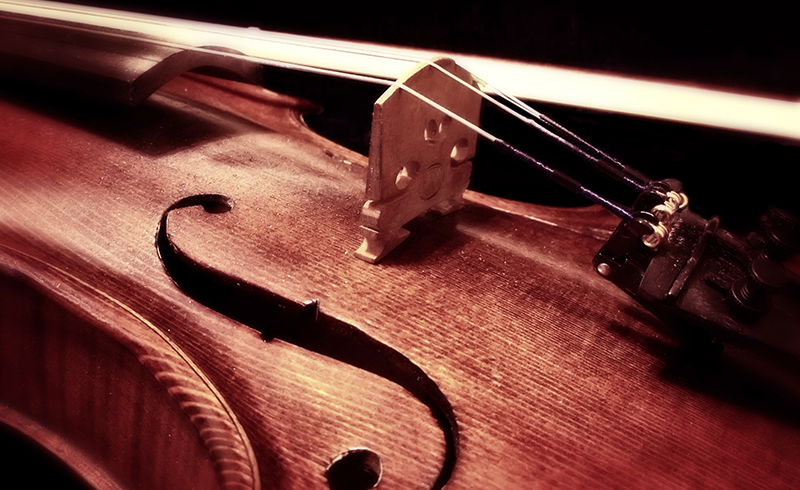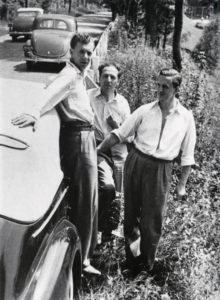
January 16, 2018
A Tale of Love & War: Britten’s Violin Concerto

By the spring of 1939, war between Britain and Germany seemed increasingly inevitable. Hitler annexed Czechoslovakia in March, putting an end to Neville Chamberlain’s declaration of “peace for our time.” As a committed pacifist and a homosexual who would have been barred from service and imprisoned had his orientation been revealed, Benjamin Britten decided to join his friends W. H. Auden and Christopher Isherwood in America. Together, they hoped to avoid the coming war and find creative stimulus in the wide open spaces of the new world. Travelling with him was his friend and roommate, the tenor Peter Pears. During their first months in America, their relationship deepened from friendship to love; the two would remain together for the rest of their lives.
Against this backdrop of looming war and blossoming romance, Britten composed his Violin Concerto. As it was nearing completion, the 25-year-old composer wrote to his publisher: “So far it is without question my best piece. It is rather serious, I’m afraid—but it’s got some tunes in it!” Indeed, it is one of his most beautiful and emotionally complex works; composed for the Spanish violinist Antonio Brosa, the concerto may also be a meditation on the recent fascist victory in the Spanish Civil War.
The piece begins with a distinctive rhythmic figure in the timpani; beginning pianissimo, it grows louder as it is repeated three times:
https://www.youtube.com/watch?v=wbcw6INQzfE
The soloist enters soon after with a fresh, vernal melody marked “dolcissimo ed espressivo”—very sweet and expressive. The rhythmic figure continues in the accompaniment as the melody soars higher and higher. The music becomes more animated as it transitions to an edgier, more energetic theme. After a moody and mysterious development, the opening melody returns in the orchestral violins, with the soloist now playing the accompanying timpani figure. A haunting coda ends with magical false harmonics—airy, flute-like notes produced by barely touching the violin’s strings.
Without pause, the orchestra launches into the second movement, a fantastical, ironic scherzo. The soloist begins by playing a dance-accompaniment pattern, but soon breaks into a rather arch melody and high-wire finger work. A contrasting middle section is tinged with an expressive, unplaceable exoticism. After a sly trio for two piccolos and tuba, the main melody resumes its puckish hijinks. The movement ends with the sudden appearance of the exotic central melody in the full orchestra, which builds to a precipice. The soloist then begins an intense, searching cadenza, an extended solo without orchestral accompaniment.
The cadenza begins with the exotic melody of the second movement, but it soon morphs into memories of the first. The opening timpani figure returns, becoming an obsessive crescendo that leads to a quiet lament in the form of the once innocent first movement melody. This seamlessly transitions to the last movement, which begins with the ominous entrance of the trombones, which have been silent until this moment.
The finale is a passacaglia, a type of theme and variations based on a repeated bass line. This passacaglia’s bass line is first intoned by the trombones, and is then taken up by the strings. Its mournful character comes from its shape: a compressed, chromatic rise followed by a downward falling scale.
This bassline becomes the foundation for a range of contrasting episodes—an intense dialogue between soloist and orchestra, a passage of Mahlerian yearning, memories of an old waltz, grand trumpet fanfares and orchestral flourishes—all of which are intensely emotionally charged. In the twilight world of coda, the soloist plays high on the violin’s lowest string, creating an intense sound choked with emotion, and ends with a trill suspended between major and minor—light and dark.
Don’t miss Britten’s Violin Concerto January 25, 27 & 28, 2018! Get tickets and more information at houstonsymphony.org.






